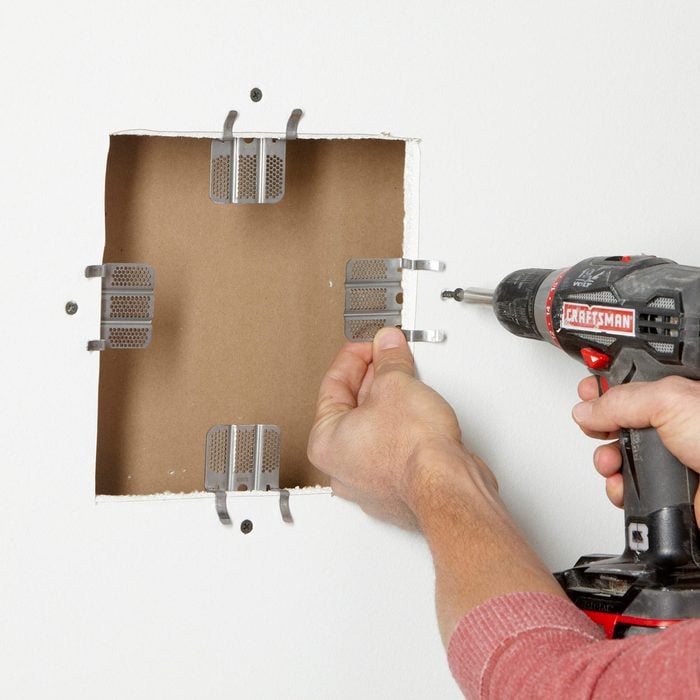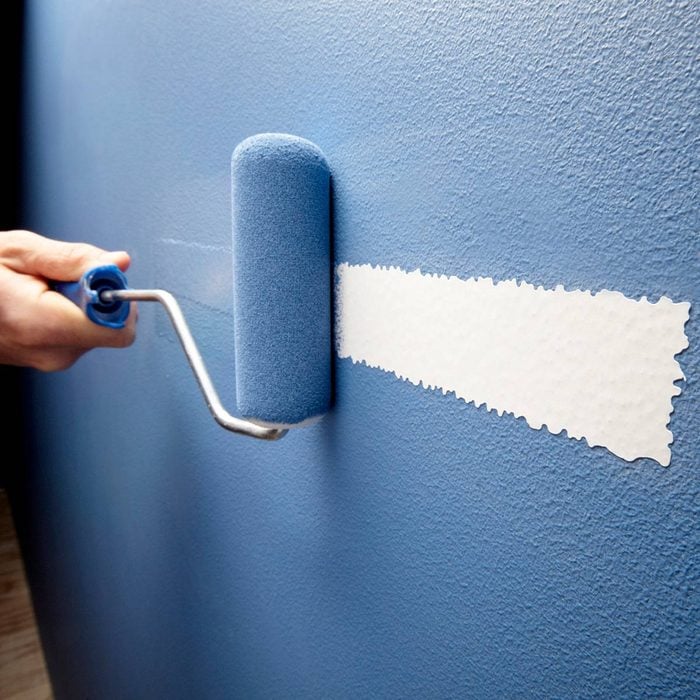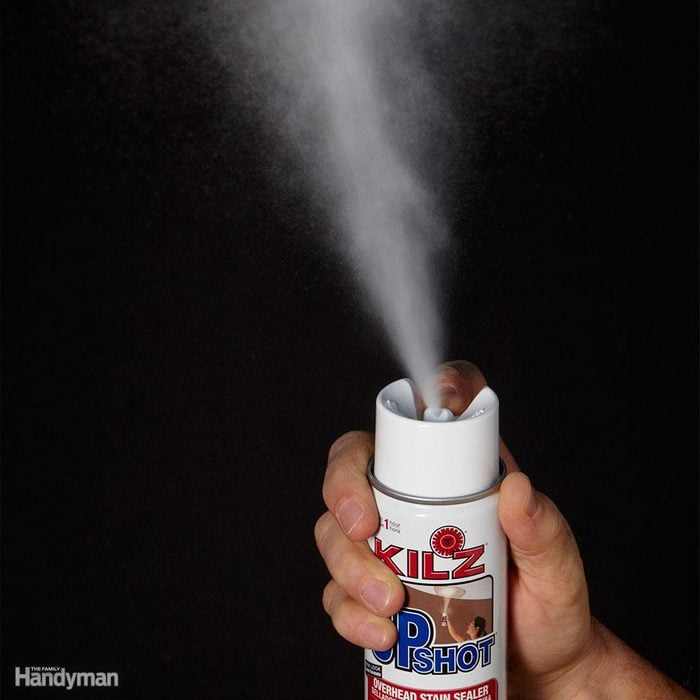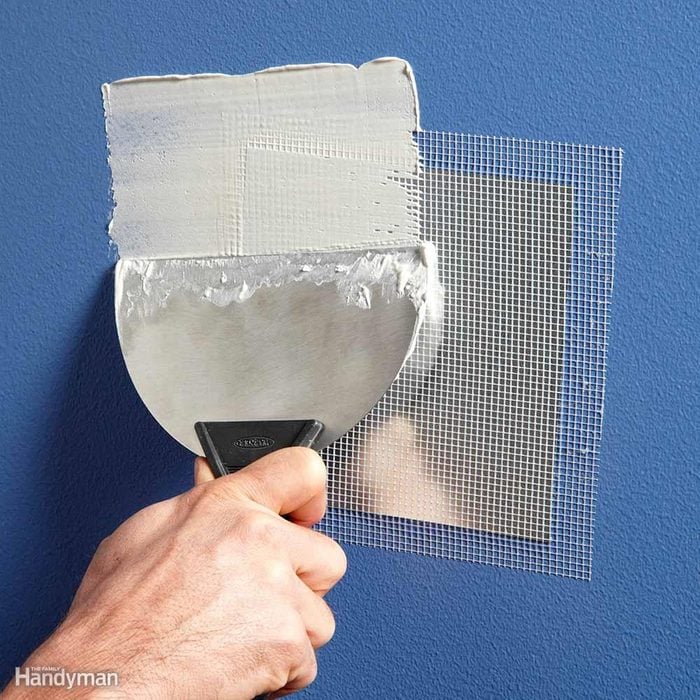We know these products work—because we use them!
Our editors and experts handpick every product we feature. We may earn a commission from your purchases.Learn more.
We know these products work—because we use them!
Our editors and experts handpick every product we feature. We may earn a commission from your purchases.Learn more.

For small repairs on popcorn ceilings, such as hairline cracks in ceiling, dab on this stuff. Start with a light application, let it dry and add more if needed. With some careful brush work, you can perfectly match the surrounding texture and easily cover minor cracks in ceiling.

Some cracks keep coming back no matter how well you repair them. For those pesky recurring cracks, we prescribe Good-Bye Cracks. It forms an elastic film that stretches and contracts along with the crack. It works best on hairline cracks, but it’s worth a try on wider cracks too. Start by cleaning loose material out of the crack and fill it with joint compound. Then spray on two to three light coats of Good-Bye Cracks. The film isn’t sandable, so a smooth, even coat is critical (practice on a scrap of cardboard first). When the film dries, prime and paint.

If you’re installing a drywall patch, you’ve got to screw the patch to something. Usually, that means installing wood backing. But here’s a quicker, easier way: Screw drywall repair clips to the surrounding drywall and screw in the patch. Then break off the tabs and you’re ready for mud.

We’ve had some good results using texture from aerosol spray cans—and some disasters. The texture blasts out fast and heavy. One wrong move and you’ve got an over-textured mess. This little hand-pump gun is much easier to control. It spits out just a little texture with each blast. So you can spray on a light texture, then add more until it looks right. Still, it’s best to practice on some cardboard first. Also have a bucket and sponge handy in case you need to wipe away a misfire and start over. We got good results matching orange peel, splatter and knockdown textures, but lousy results with popcorn ceiling texture.

Step Saver Stress Crack Tape sounds like the perfect solution for cracks. Just stick it on and paint over it. So we gave it a try. The tape was still visible from across the room—even under two coats of paint. If you take a few minutes to skim over it with joint compound, the tape disappears completely. But will the tape stretch and stay stuck through seasonal crack movement?

If you have a water-stained ceiling, a stain-blocking primer is mandatory to prevent the stain from bleeding through a fresh coat of paint. You could roll on primer, but there are two spray-can products you should consider first: Kilz Upshot and Zinsser Covers Up are both stain-blocking primers, and both have nozzles that shoot upward—perfect for ceiling work. Upshot is tinted to match aged, unpainted ceiling texture. Covers Up is a lighter shade of off-white. So if you’re lucky, the primer will blend in and you won’t have to paint the whole ceiling.

Every fix-it guy we know—DIYer or pro—loves selfstick metal patches. Just stick one over the hole and mud over it. Find them in sizes from 4 x 4 in. to 8 x 8 in.
There are lots of things to consider when fixing ceiling cracks. If you think it’s a bigger project than you can handle, it’s best to call in a professional. “You could patch your ceiling on your own. However, to achieve a perfectly smooth appearance that blends seamlessly into your ceiling, you might want to have a professional do it,” says Laniado. If you’re considering a DIY approach, to determine which products are necessary, consider the type and location of the damage on your ceiling, the size of the repair area and the texture of your ceiling.
In addition to gathering tips from various Family Handyman editors, we sought advice from Ezra Laniado, founder of Landmark Construction Crew Inc. With an engineering degree from USC and a passion for construction, Laniado specializes in building energy-efficient homes that are cost-effective to maintain. His meticulous attention to detail sets his company apart and positions him as an authority on products for addressing ceiling repair cracks.
We researched various ceiling issues and identified the best products for addressing them. Our selection criteria focused on finding solutions that were simple to use and effective. Additionally, we consulted with a carpenter to ensure comprehensive coverage of wall and ceiling repair essentials. Lastly, we analyzed user reviews to provide insights into real-world experiences with these products.